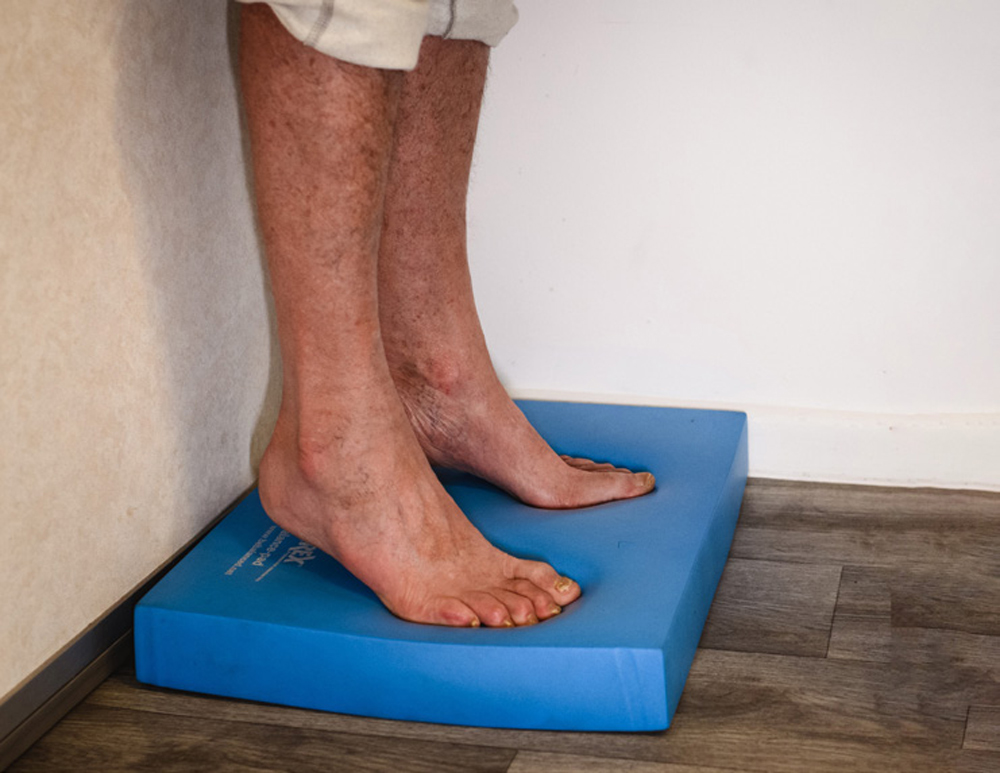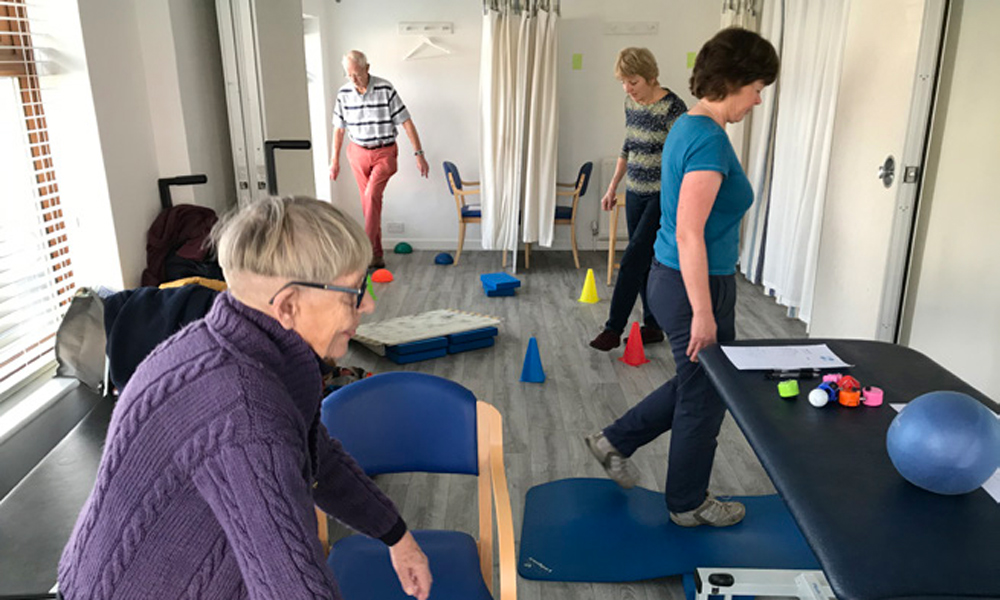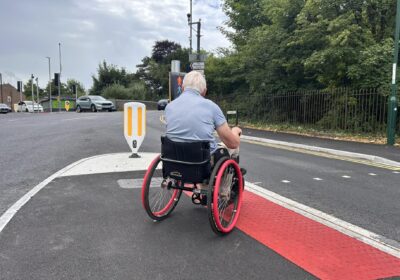AS a physiotherapist, one of my roles is to advocate exercise and an active lifestyle. As well as specialising in neurological conditions I help people who have balance and mobility problems. This article will help you understand why you or someone you care about has developed balance problems and what can be done to restore balance and confidence. Ultimately, it is about prevention strategies for the future; keeping strong, flexible and maximising balance ability.
Balance can affect people at different levels. You may be walking coast paths and notice you are not as stable on uneven ground and stepping over a stile. Or you may find you are not as confident with every day activities like reaching into a low cupboard or carrying a hot drink upstairs. Either way, this is the time to act.
In order to maintain balance and stability, we need information from our eyes, skin, joints and inner ear. The brain collates all this input and then sends messages to our muscles to make the adjustments to maintain balance. A problem with any one of these systems will affect balance.
Why does our balance become more affected as we get older?
It has been found that muscle strength starts to diminish from the age of forty, meaning that with normal aging, people may not be as able to produce sufficient force in their muscles to regain balance if they trip or lose balance. In particular, the calf muscle becomes weaker and has been associated with falls in later life.
As we get older, our reactions slow down, affecting the ability to adjust quickly enough to maintain balance. Furthermore, stiff joints and muscles make it harder to adapt. If we lose confidence in our ability, restriction of activities leads to further weakness and balance difficulties. The good news is there is lots that can be done to resolve these issues and restore confidence and mobility.

Tip- Strengthen your calf muscle by raising up onto your tiptoes.
What can you do to improve balance?
Evidence shows that specific exercises can improve balance, mobility and reduce risk of falls in the future. Exercises and activities must be challenging enough to cause you to make small adjustments and slightly wobble but not so hard that you have to take a saving step.
Safety Tip – Stand near to a wall or work surface when you are practising new exercises.
Standing with eyes closed, standing on one leg, walking on the beach or playing a sport like tennis where you have to change direction quickly are examples of progressive balance challenges. Strengthening exercises to
target muscles vital in balance should also be included in a programme, for example squats, coming up on to toes, sit to stand practice and core stability exercises.
At Dorset Neuro Physio we assess balance and strength to identify your particular problem then set up a specific exercise programme with challenges and goals. We provide home visits to build confidence in your everyday activities and outdoor mobility. We also offer clinic appointments and run a Dizzy Clinic at Swanage Therapy Centre.
Balance Classes
Our Balance Class takes place at 10.45am on Wednesdays at Swanage Therapy Centre. This is circuit-based, dynamic, high-level exercise class, providing the opportunity to challenge balance and build strength and confidence in a safe environment.
Please call Holly Sizer on 07967 096742 or email holly@dorsetneurophysio.co.uk
to find out about the exercise classes, book a 1:1 session or discuss your needs.
HOLLY SIZER
Specialist Physiotherapist in
Neurology and Rehabilitation










Leave a Reply